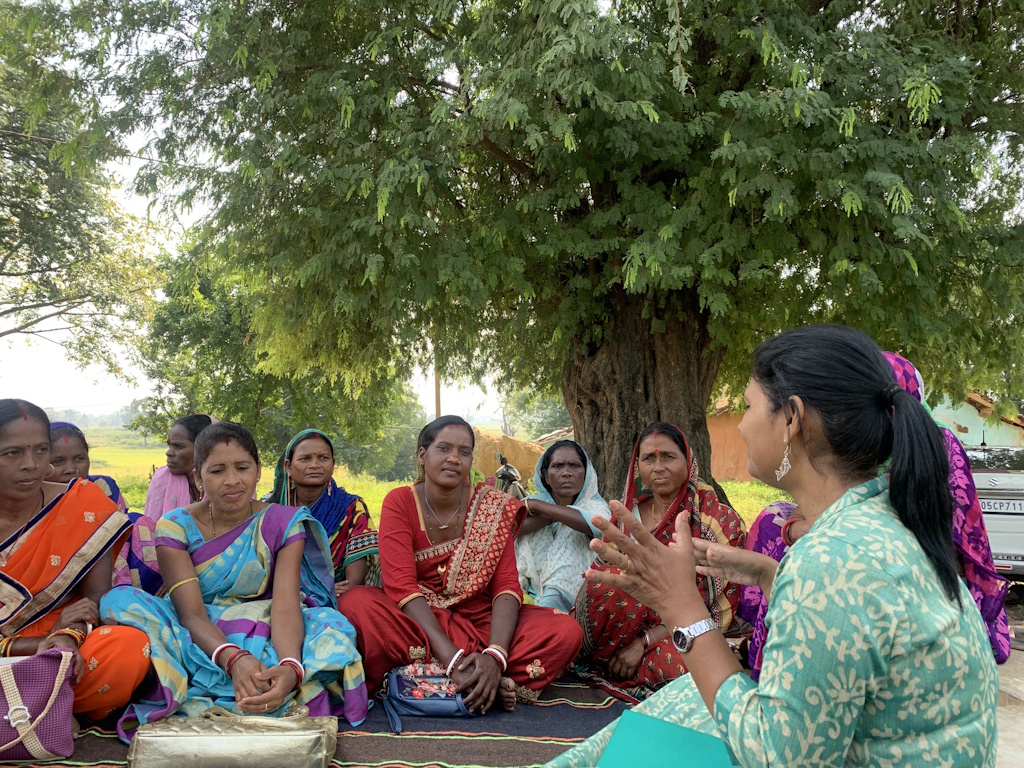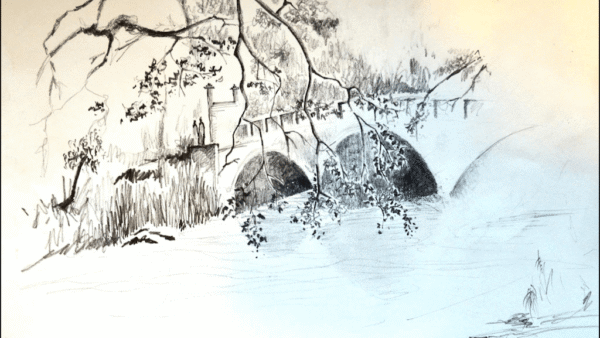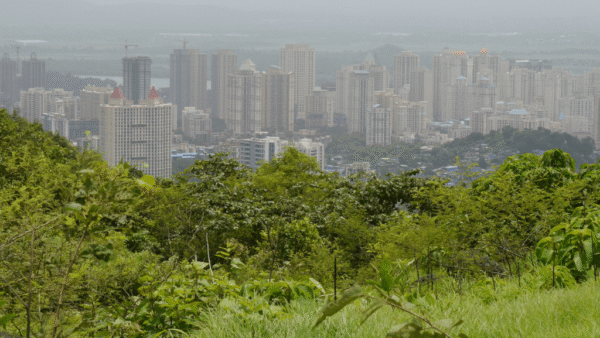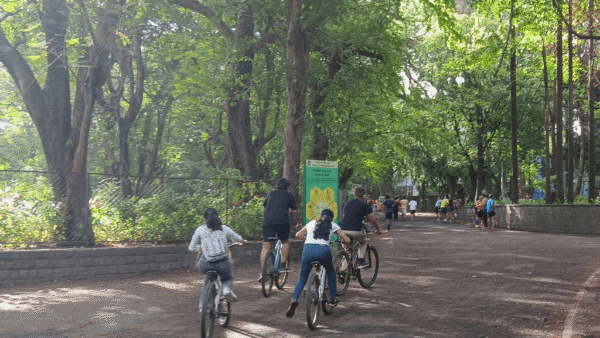“It is so hot these days that the walls, which were otherwise cooler, now become very hot during summer and emit heat. Something is seriously wrong with the weather.”
—Sangita Mane, a 35-year-old resident of a slum in Govandi
“Our sowing festival would take place after the first onset of rainfall in June. But it has shifted and sometimes only happens in July due to erratic rainfall. With time, the weather patterns have changed.”
—Malati Nayak, a tribal from Koraput, Odisha
“We travel from our village in Marathwada to Western Maharashtra to cut sugarcane every year. The season earlier lasted for five months. Now, there is barely any work for three months. The weather has become erratic.”
—Shankar Kedare, 81-year-old farmer from Beed, Maharashtra
These stories are neither isolated nor merely anecdotal—they reflect a pattern of change that is being felt across India’s cities and rural landscapes. While the terminology may differ, the message is clear: Something fundamental is shifting in the climate. Yet, as marginalised communities grapple with tangible disruptions to their daily lives, the global and national discourse on climate change remains distant—the terms and concepts are too scientific, the explanations shrouded in academic language, the discussions are replete with jargon while people’s lived experiences and stories of climate change find little space in them.
Scholars, policymakers, civil society organisations, businesses, and nation-states are worried about what is increasingly being called the “Triple Planetary Crisis”[1]—climate change, pollution, and biodiversity loss. India, as a signatory to the Paris Agreement[2], has pledged to reach net-zero emissions by 2070 and to achieve 50 percent of its installed electricity capacity from non-fossil sources by 2030.[3]
While these commitments are important steps, the language used to communicate them often fails to bridge the divide between policy and lived experience. Technical jargon such as greenhouse gases, emission targets, net-zero goals, and carbon footprint dominates both policy and media narratives, failing to connect with the realities of those most affected by the crisis. These terms, embedded in scientific and policy discourses largely shaped by the Global North, can feel alien or inaccessible to communities in the Global South—especially in a country like India, where climate change not only exists as a crisis in itself but also exacerbates the existing socio-economic vulnerabilities for most people. In 2024, India experienced extreme weather events on 322 out of 366 days[5] or nearly 88 percent of the year saw extreme weather in some part. Between 1993 and 2022, India reported a loss of 80,000 lives and nearly $180 billion in 400 such extreme weather events.[6]
The gap is huge between how climate change is communicated in the mainstream policy or media discourse and how people perceive and articulate it in local and contextual ways. This creates a major barrier to making climate a people’s issue in a true sense. Even the reports by the Intergovernmental Panel on Climate Change[7]— which reach a select percentage of the population as they are in English and their understanding or interpretation require proficiency in research or science—have become increasingly unreadable, as this research[8] suggests.
The question arises: how do we embed climate change in the existing socio-cultural and economic realities of India’s diverse communities and make the conversation more accessible and participatory? In simple terms, how do we communicate climate change better so that it does not exclude the very people it affects the most? In this essay, I attempt to present some interventions that can help us travel in that direction, based on research, advocacy, and ground-level insights by scholars, civil society organisations, journalists, communicators, and climate activists.
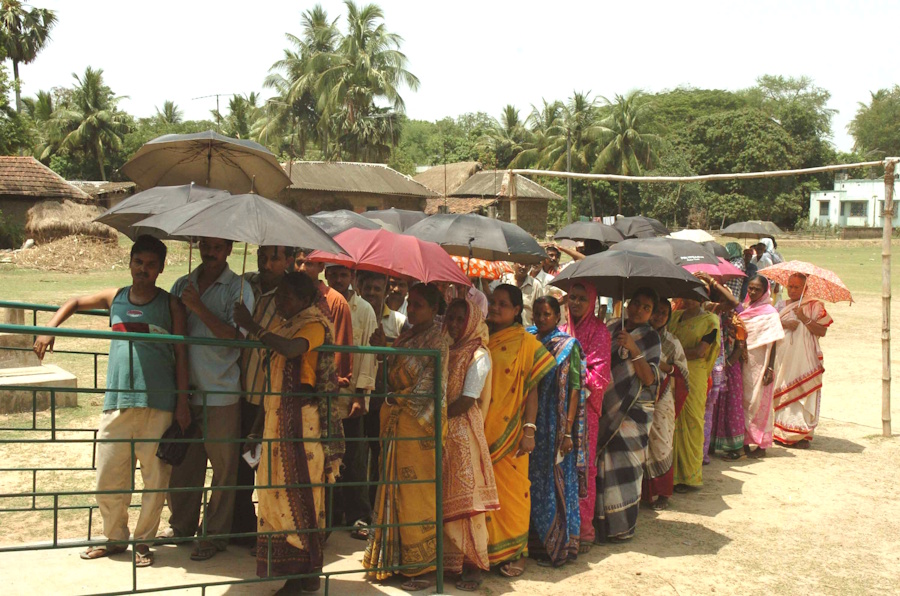
Photo: Wikimedia Commons
Translation needs to be supplemented with localisation efforts
There have been several global and national efforts to simplify climate jargon and make key climate change-related concepts more accessible. A notable example is the United Nations Development Programme’s Climate Dictionary[9], which offers Hindi translations of climate terms. Such efforts exist in various foreign as well as Indian languages. Similarly, several digital news media and storytelling platforms have started offering translated versions of important stories and data published on their platforms.
While such efforts are important, some questions remain. Does translating content automatically make it locally relevant? Especially in a country like India with 22 official languages, hundreds of spoken languages, and thousands of dialects, it is important to understand that there is a huge distinction between the written language and the locally spoken articulations of climate change. Communities across India articulate changing weather patterns in context-specific ways—such as seasons changing, festivals shifting, crops getting delayed—and mostly do not know or use literal translations such as jalvayu parivartan (Hindi) or havaman badal (Marathi). We need to capture local articulations and framings of the climate crisis[10] through research and ground-level media reporting.
While doing so, we also need to make narratives on climate change more accessible at the grassroots. This includes leveraging local media channels, community platforms, and social spaces frequented by communities. We also need to build the capacities of local media and storytellers to bring the lens of climate to the work that they do, as they command a huge sphere of influence. Our images of climate change should reflect the plight of the woman risking her life to fetch water in a drought-parched village of Maharashtra and not merely the hackneyed pictures of struggling polar bears and melting ice caps in the Arctic.
Climate needs to be framed as an everyday issue
For most communities in the Global South, ‘climate change’ remains a distant problem as they grapple with fundamental issues of food security, quality education, healthcare, housing and sanitation. We need to consider this while communicating climate change and draw the link between the two. For example, we cannot speak about emissions without talking about the quality and access to public transport.
Last year, I was a part of the research team that looked at the Role of Vulnerability in Transition to Clean Cooking[11] in the peri-urban slums of Nagpur. The community is engaged in waste picking and other informal, insecure occupations. For most members, hazard and risk are a way of life. They travel several kilometres looking for waste and deal with unsegregated waste. Most of the households burn chulhas but are unable to reduce the health risks that come with it due to financial constraints.
We realised that any effort to help them make this shift would have to be embedded in solutions for their top issues such as spatial segregation and informal occupations. It underscored again that climate change and its many articulations still seem remote to such communities. They may not draw the link; we need to frame it in their everyday lives—food, living space, air they breathe, cultural practices—for climate change to be more relatable and urgent for them.
Climate change has to also become a crucial framework in social sciences research to make it more intersectional and transdisciplinary on climate. We can take inspiration from frameworks on gender. During the 1970-80s, with the rise of feminist scholarship and women’s liberation movements across the world, the gender lens was applied to social issues such as poverty, caste discrimination, and politics. Today, despite the many challenges in gender mainstreaming, it is a crucial lens that cannot be ignored. We need to do the same with climate change. This framing can only happen when climate research also speaks to the social realities of people. Such a framing of the crisis will also help in decolonising the climate conversation.[12]
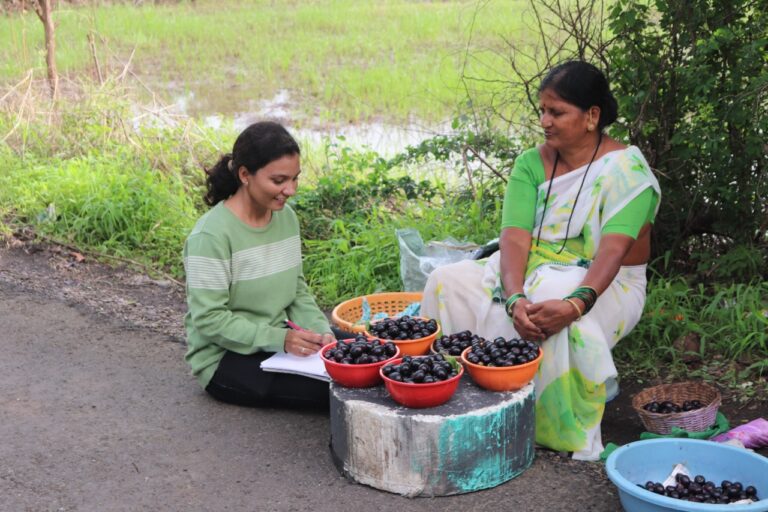
Photo: Baimanus and Mongabay India
Leverage storytelling and bottom-up narratives
Unlike policy briefs or research papers on climate change which have a specific niche audience, stories about people and their spaces hold nuance, emotion, memory, and imagination—all of which are vital when talking about something as complex and intangible as climate change. Importantly, storytelling enables communities to reclaim their agency.[13] When a farmer in Vidarbha talks about drought using metaphors rooted in his everyday reality, a woman in Odisha speaks about the degradation of forest commons impacting her livelihood, or a fisherwoman in the Sundarbans explains sea-level rise through changes in fishing patterns, they are not just passive recipients of climate information—they are knowledge producers.
These localised narratives not only offer rich insight into the impacts of climate change but also provide clues about adaptive practices and community-led resilience often invisible in mainstream frameworks. An example is Project Dharitri[14], a reporting project by Asar*[15] (a social impact start-up) and Baimanus (a community media platform) where women community leaders are trained to tell climate stories that make it to the national and international media in addition to appearing in local-language media. Several efforts of using dance[16], music[17], poetry[18], theatre[19], art[20] and comedy[21] to talk about air pollution, biodiversity loss, and climate change are being taken to national and international[22] levels; these need to be scaled up and supported.
Equally, we need to make our official policies and communication around climate change simpler to understand and use various means of storytelling. Governments and local agencies should invest heavily in social and behaviour change campaigns to make this happen. We need to also embed local articulations of climate challenges into adaptation strategies. For instance, in Maharashtra’s Vidarbha and Marathwada regions, farmers often refer to “wet droughts”—unseasonal rain destroying crops, which is usually followed by drought (absence of rain). This term challenges official definitions and scientific understanding of droughts but captures community realities more precisely.
Acknowledging such understanding is important to frame inclusive and accessible climate policies at various levels. During the COVID-19 pandemic, a combination of grassroots communication, relatable messaging, and visual storytelling played a key role in disseminating health information. Similar methods can be adapted for climate action—be it explaining a heat wave, building awareness about water conservation, or encouraging climate-resilient farming practices.
We also need to shift our urban elite gaze of looking at communities on the margins as mere victims of climate change and focus on creating narratives and stories of locally led climate action.[23] Across India, individuals and communities are coming up with contextual solutions to adapt and build resilience to the impacts of climate change[24] they face on a day-to-day basis—cooling roofs, climate-resilient agriculture, and locally-led flood plans need to be popularised and taken into conversations on national and international platforms.
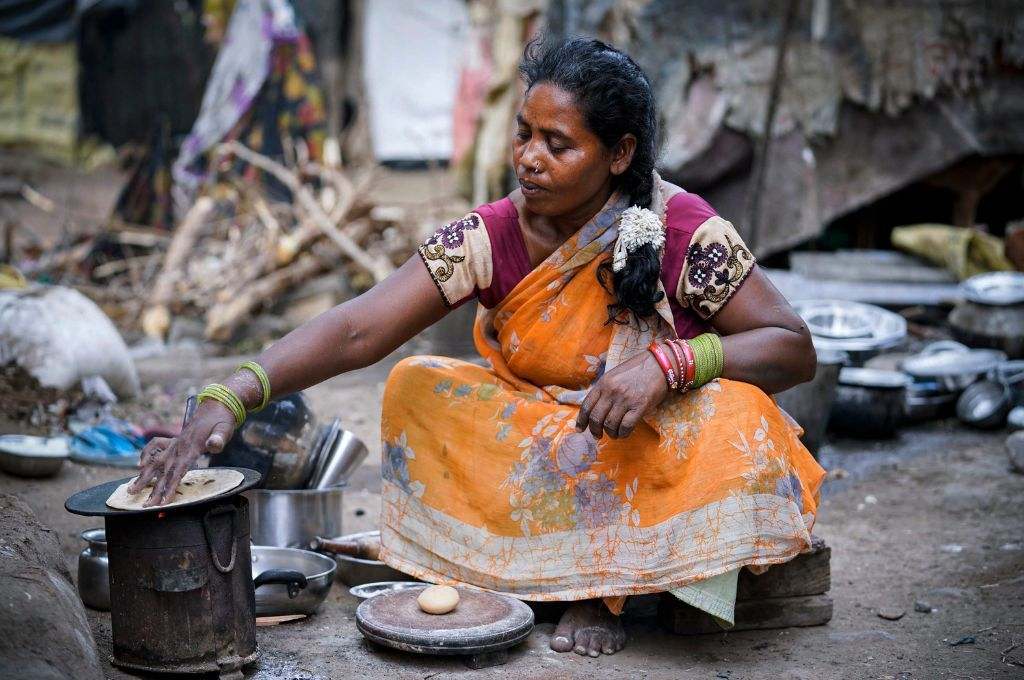
Photo: Sudharak Olwe
Capacity building of mainstream media
Currently, the ‘environment’ beat in newsrooms is one of the most neglected beats,[25] often assigned as an additional responsibility to reporters covering the civic beat or politics. Climate change only features in mainstream reportage in cases of extreme weather events or during international negotiations such as the Conference of Parties (COP). The mainstream media must go beyond weather predictions and loss and damages to tell climate stories.
Recently, I spoke at a media workshop on drought, gender and climate change in Dharashiv (erstwhile Osmanabad), a drought-affected region in Maharashtra. Most reporters were not able to distinguish between climate change, weather, temperature, and development-induced biodiversity loss. In a room of more than 50 district-level journalists, despite all efforts, we did not manage to bring in a single woman.
This reflects the majority of rural India where working conditions for local journalists and stringers are tough. Publications are interested only in politics and crime, making it easier for male reporters to work. India’s regional media is far behind in joining the global conversation on climate change. We need to shift that by engaging journalists across beats so that they look at the intersections of climate change with education, health, politics in their day-to-day reporting. Such training should be grounded in the realities that journalists face and be designed in a manner that there is a scope for two-way interaction and learning as opposed to a top-down expert-driven exercise.
Climate communications as a strategic function
The majority of the organisations working in the climate space look at climate communications only from a dissemination and awareness-building perspective. Philanthropic funding and government support are still concentrated on mitigation measures[26] with less emphasis on adaptation and within that, barely any focus on communicating climate. Communications is often viewed merely as an outreach and marketing function rather than a strategic function and a value addition to designing impact-driven programmes.
We need to prioritise funds for grassroots capacity building on climate change, media literacy, and facilitation of existing media to tell climate stories from the remotest parts of the country. Especially at a time when we are seeing several international fund cuts[27], there is a high risk that communication will get less funding. Research and communication are integral to any climate-related programme to create impact in the true sense.
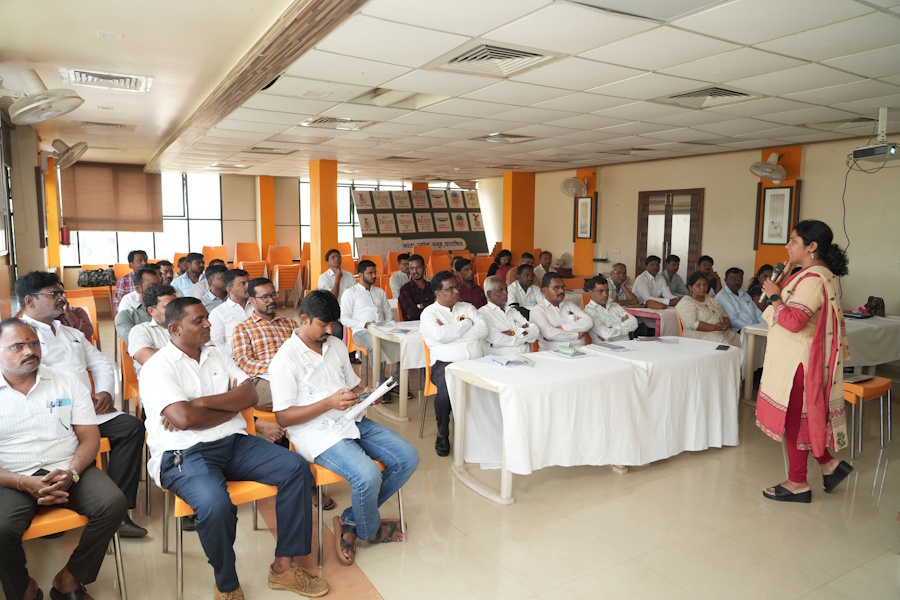
Photo: Asar
Summing up
Climate change remains a relatively new and evolving conversation in much of the Global South. The ecosystem of organisations, storytellers, and community actors engaging with this issue has only started to take shape in the past decade. In the coming years, we will witness a growing wave of efforts—some experimental, others institutional—to communicate climate change in new and compelling ways as climate becomes centre stage in policy and mainstream narratives.
But the real test of these approaches won’t lie in international recognition or polished campaigns. It will lie in how meaningfully they resonate on the ground—in how a coal worker in Jharkhand or a landless labourer in Maharashtra understands, imagines, and navigates a world that is 1.5 degrees C warmer. Climate communication will only succeed when it becomes rooted in people’s realities, languages, and aspirations.
Ankita Bhatkhande is a Mumbai-based former journalist turned climate and social impact communicator and writer. She is currently working as the Head of Communications, Gender and Climate at Asar *Social Impact Advisors and is working on building bottom-up climate narratives in India. Asar is a social impact organisation that enables a “collective impact” approach to tackle some of the big environmental challenges, with a focus on air pollution and climate change.
Cover photo: QoC file

